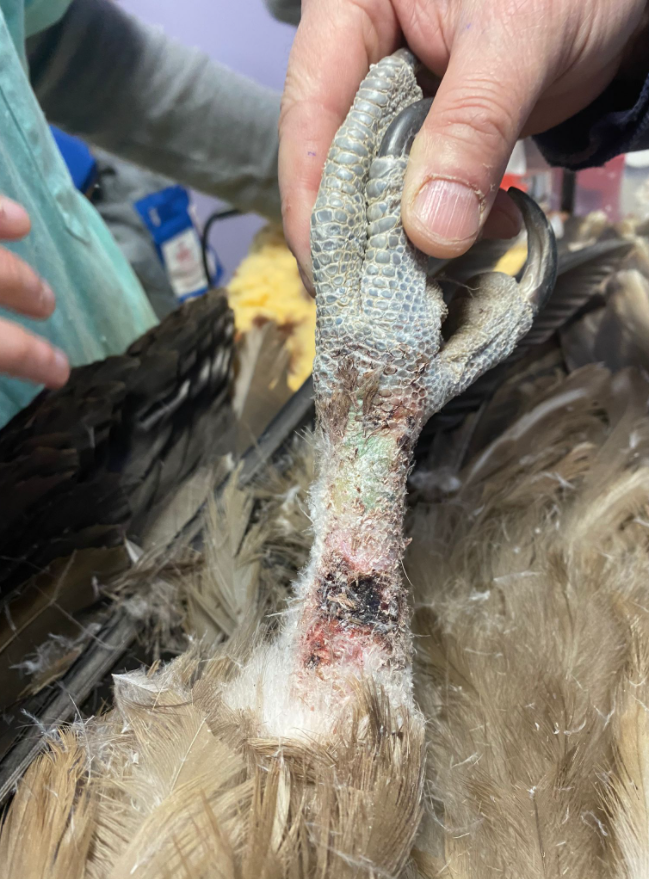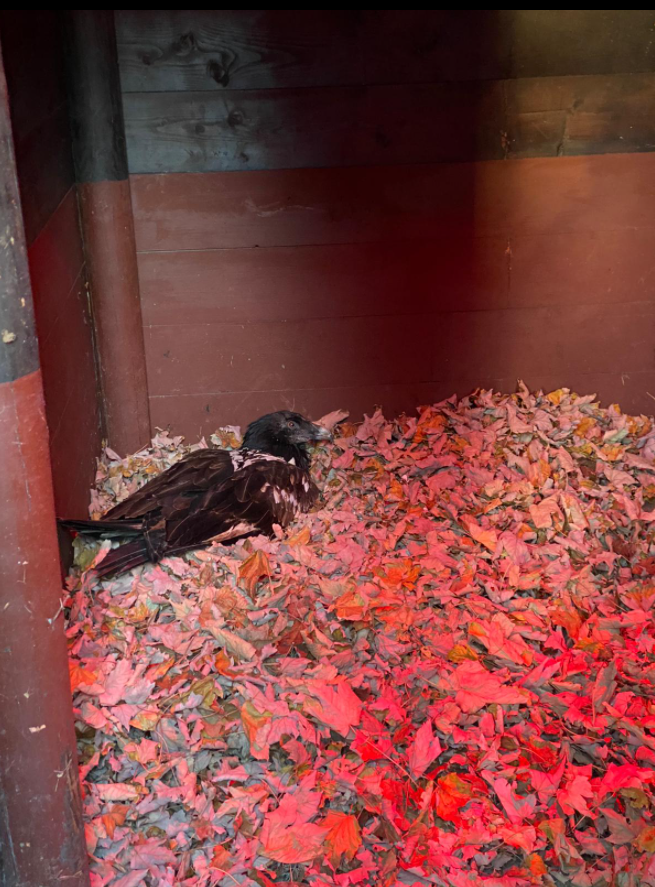
We are devastated with the loss of Palo-Pala, a young captive-bred Bearded Vulture we released in Vercors, France, in the summer of 2020 as part of the LIFE GypConnect’s reintroduction efforts. The young vulture had an unfortunate encounter with dangerous electricity infrastructures in Italy, resulting in an electric shock and his eventual death shortly after.
Breeding and releasing Palo-Pala
Palo-Pala (BG1062) was one of the 25 captive-bred Bearded Vultures produced during the last breeding season within the Bearded Vulture Captive Breeding Network, coordinated by us at the Vulture Conservation Foundation (VCF) on behalf of EAZA‘s EEP (Bearded Vulture EEP), which breeds the species for conservation purposes. Palo-Pala hatched on 28 February 2020 at the Bearded Vulture Captive Breeding Centre of Guadalentín, which is the Centre that breeds the most chicks in captivity, currently managed by the VCF following an agreement with the Junta de Andalucía. The team at the Centre hand-reared the male chick for the first six days and then transferred him to an aviary where a Bearded Vulture parent adopted and naturally reared Palo-Pala.

A few months after hatching, the Bearded Vulture EEP determined Palo-Pala’s destination — Vercors in France. When the male vulture reached around three months of age, the team from Parc Naturel régional du Vercors released Palo-Pala together with Kobalann at the hacking platform on 3 July 2020. Both Bearded Vultures successfully fledged one month after, specifically, Palo-Pala on 2 July at 125 days old. Ever since he flew into freedom, Palo-Pala has been widely exploring the release site and surrounding areas, recently making his way to the Italian Alps.
Electrocution kills Palo-Pala in Italy
For the past couple of weeks, Palo-Pala has been travelling and staying at the Gran Paradiso National Park in Italy, and everything seemed fine until it wasn’t. The Vercors monitoring team received worrying GPS data, indicating little movement, and contacted colleagues based in Aosta Valley, informing them that something was wrong with the vulture. They swiftly discovered and retrieved Palo-Pala on 11 February, transferring him to a rehabilitation centre. There, the veterinarian Michel Mottini was able to examine the vulture.
At first, Palo-Pala seemed to be weak (nearly lost 1kg), dehydrated and slightly injured in the legs and one shoulder, suggesting that everything would turn out alright in the end. As the veterinarians further investigated his condition alongside VCF’s Alex Llopis’ consultation, it became clear that Palo-Pala’s injuries were more serious than initially thought. As it turned out, the young Bearded Vulture was in this sorry state due to suffering an electric shock. The magnitude of the damage caused by an electrocution is not apparent until a few days pass, and the consequences of the affected organs and tissues emerge. Despite all the incredible efforts undertaken to save the vulture, sadly, Palo-Pala died on the night of Monday, 15 February 2021, a few days before turning one year old.
Tackling the threat of electrocution
The Vulture Multi-species Action Plan (Vulture MsAP), co-developed by the VCF and endorsed by the Convention for Migratory Species (CMS), identified the often overlooked threat to vultures posed by energy infrastructure, particularly electrocution and collisions. When flying or landing on dangerous pylons, birds often touch the wires and die as a result of an electric shock. These incidents, as with most human-caused mortalities, are known to contribute to declines in populations of protected bird species, including vultures, so it is important to reduce and eliminate any potential threats.
Once high risk electricity lines have been identified, there are are numerous effective measures that can be used by electricity companies to prevent electrocutions, such as “retrofitting” live wires with durable plastic insulated casings or even replacement of dangerous poles with more modern designs that reduce or eliminate the risk of bird electrocutions. Although this can be logistically challenging and sometimes expensive, many electricity companies are willing and able to cooperate in implementing these measures, not only due to legal obligations to prevent the deaths of protected species, but also due to willingness to engage in conservation actions. In the long term, selecting pole designs that are less dangerous or even burying lines underground in high-biodiversity areas seem better options. There are many projects, including our own LIFE-funded projects such as Vultures Back to LIFE and LIFE Re-Vultures, that are working to tackle the threat of electrocution and collision with electricity infrastructure. The MAVA Foundation is also funding projects across the eastern Mediterranean flyway to minimise the threat of electrocution.
LIFE GypConnect

Led by the League pour la Protection des Oiseaux (LPO), the LIFE GYPCONNECT project aims to establish a breeding population of Bearded Vultures in the Massif Central and Department of the Drôme. Releasing captive-bred Bearded Vultures into the wild at sites such as the Parc Naturel Régional des Grands Causses, Parc Naturel Régional des Baronnies Provençales and Parc Naturel Régional du Vercors will create a core population that will connect the two populations of the species in the Alps and Pyrenees. To facilitate movements between the new population and the Alpine and Pyrenean populations the LIFE GYPCONNECT team is creating a network of supplementary feeding stations, and tackling threats such as poisoning, and collision and electrocution with the electricity infrastructure.











